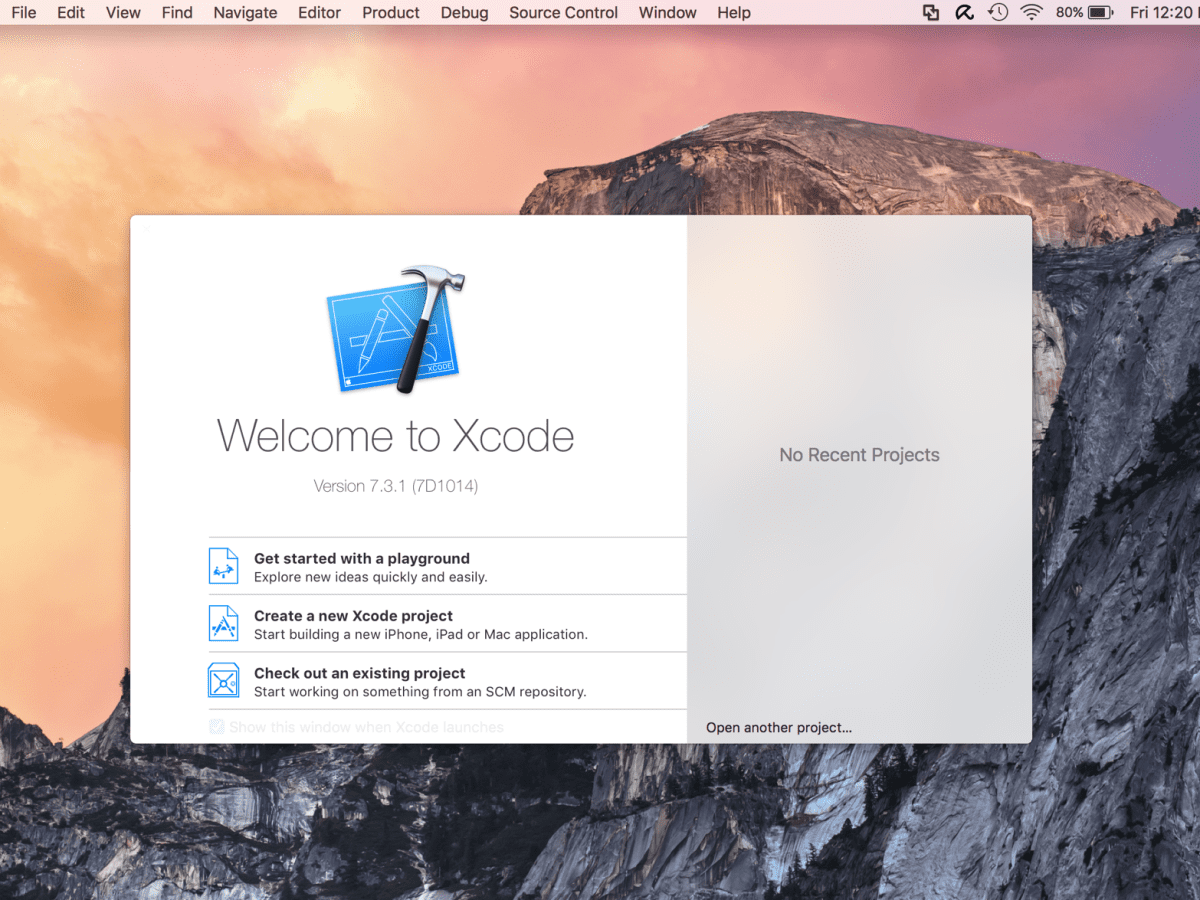
- OS X PROGRAMMING SWIFT HOW TO
- OS X PROGRAMMING SWIFT UPDATE
- OS X PROGRAMMING SWIFT CODE
- OS X PROGRAMMING SWIFT MAC
Under macOS, select Source/Swift File and press Next: With the Panagram group selected in the Project navigator, press Cmd + N to create a new file. Also this can make debugging of a shipped application much easier by hiding information the user doesn’t need to see, but still keep the error messages for later inspection. It is a common practice to redirect stderr to a file so error messages scrolled off the screen can be viewed later. Note: When launching a command-line program from either Xcode or from Terminal, by default, stdout and stderr are the same and messages for both are written to the console. This is normally attached to the display, but can be redirected to a file.

Unix-based systems such as macOS define two different output streams: For example, a program that converts video files into different formats could print the current progress or some error message if something went wrong. In most command-line programs, you’d like to print some messages for the user. This keeps things streamlined and helps you to understand the main execution path. It’s a good idea to keep your main.swift file as clean as possible and put all your classes and structs in their own files. When you run your project, the first line inside the main file that isn’t a method or class declaration is the first one to be executed. Swift doesn’t have a main function instead, it has a main file. This means the program execution starts with the first line of this function.
OS X PROGRAMMING SWIFT CODE
the code that the operating system will call when the program is executed. Many C-like languages have a main function that serves as the entry point - i.e. In the Project Navigator area you will now see the main.swift file that was created by the Xcode Command Line Tool template. Make sure that Language is set to Swift, then click Next.Ĭhoose a location on your disk to save your project and click Create. Find the macOS group, select Application/Command Line Tool and click Next:įor Product Name, enter Panagram.

This is not a bad idea, but if you are already used to Swift and its standard library, you can reduce the time investment by sticking with Swift.įor this tutorial, you’ll create a classic compiled project. Many people say that a programmer should learn one new language every year.

This gives you the advantages of scripting languages, such as zero compile times and ease of maintenance, along with the choice of compiling your app to improve execution time or to bundle it for sale to the public.
OS X PROGRAMMING SWIFT HOW TO
At the end of the tutorial you will learn how to launch Panagram from the terminal. For the sake of simplicity and ease of learning, in this tutorial, most of the time you will use Xcode to launch Panagram. Typically, command-line programs are launched from a shell (like the bash shell in macOS) embedded in a utility application like Terminal in macOS.

It can be started with predefined arguments, or run in interactive mode where the user is prompted to enter the required values. Depending on the options passed in, it will detect if a given input is a palindrome or anagram. In this Command Line Programs on macOS tutorial, you will write a command-line utilty named Panagram. If the building process was baked-in to the Xcode product, continuous integration solutions would be hard to achieve, if not impossible! In fact, the majority of the servers that form the Internet run only command-line programs.Įven Xcode uses command-line programs! When Xcode builds your project, it calls xcodebuild, which does the actual building. Command-line programs such as ImageMagick or ffmpeg are important in the server world. CLIs are text-based interfaces, where the user types in the program name to execute, optionally followed by arguments.ĭespite the prevalence of GUIs, command-line programs still have an important role in today’s computing world. Not so long ago, before the advent of the GUI, command-line interfaces ( CLI) were the primary method for interacting with computers. GUIs, as the name implies, are based on the user visually interacting with the computer via input devices such as the mouse by selecting or operating on screen elements such as menus, buttons etc.
OS X PROGRAMMING SWIFT MAC
The typical Mac user interacts with their computer using a Graphical User Interface ( GUI).
OS X PROGRAMMING SWIFT UPDATE
Update 7/21/17: This command line programs on macOS tutorial has been updated for Xcode 9 and Swift 4.


 0 kommentar(er)
0 kommentar(er)
